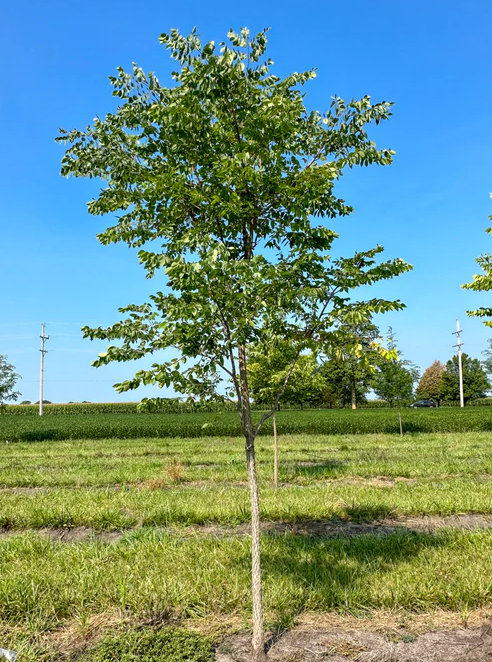Kentucky Coffeetree, Bare Root
Silvopasture-Ready Tree for Tough Sites
Kentucky Coffeetree, Bare Root - Bare Root / 6-18" Seedling is backordered and will ship as soon as it is back in stock.
Couldn't load pickup availability
Delivery and Shipping
Delivery and Shipping
Make sure to thoroughly review our entire "Shipping, Returns, Refunds, and Our Guarantee" page for all relevant details about ordering from our store.
Making a purchase from our store constitutes an agreement to all the conditions outlined in those policies.
We appreciate your support and look forward to being your favorite plant provider!
Subscribe to our newsletter
Sign up for exclusive offers.
Kentucky Coffeetree (Gymnocladus dioicus)
An uncommon but highly valuable native tree, the Kentucky Coffeetree offers unique ecological benefits, striking winter form, and rugged adaptability. Native to the central and eastern U.S., this nitrogen-tolerant legume supports soil health in degraded sites and is gaining popularity in regenerative landscapes and silvopasture systems. Its name comes from early settlers who roasted its large, tough seeds as a coffee substitute—though they are toxic raw. With deeply furrowed bark and bold, tropical-looking leaves, this tree stands out in both form and function.
Key Characteristics
-
Supports soil regeneration in poor or degraded soils
As a member of the legume family, Kentucky Coffeetree contributes to improved soil fertility, particularly in compacted or low-nutrient soils. Though not a strong nitrogen fixer itself, its presence supports nitrogen cycling and long-term soil recovery. -
Ideal for silvopasture and open-canopy systems
With its open branching structure and high, filtered shade, it allows plenty of light to reach the understory, making it excellent for silvopasture designs where grasses and forage species grow beneath a light tree canopy. -
Unique winter architecture and large tropical-like leaves
The bipinnately compound leaves are among the largest of any native tree in North America, giving a tropical appearance in summer. In winter, its stout branches and rugged bark create bold visual interest in the landscape. -
Wildlife and ecological value despite sparse foliage
While not a major host plant, it provides nesting cavities in mature trees and is used by squirrels and other small mammals. Its large seedpods persist through winter and offer late-season interest, even though few animals eat the seeds. -
Traditional uses and early American lore
Early settlers roasted the seeds as a caffeine-free coffee substitute—though care is required, as raw seeds are toxic. Indigenous communities also used the wood, bark, and pods in various applications, including tools and tonics.
Product Details
- Native range: Central and Eastern U.S., especially the Ohio and Mississippi River Valleys
- Plant life cycle: Deciduous Tree
- Sun requirements: Full sun
- Soil requirements: Medium-dry to medium; highly adaptable to poor soils and drought
- Mature height: 60–80 feet
- Bloom time: Late spring to early summer
- Bloom color: Greenish-white (fragrant, but not showy)
- USDA Hardiness zones: 3–8
Kentucky Coffeetree is a hardy, long-lived native with distinctive form and multifunctional use in regenerative systems. It's a superb addition to silvopasture, reforestation, and low-maintenance landscapes needing tough, resilient trees with ecological value.
-
Sun RequirementsFull Sun
-
Soil RequirementsMedium, Medium-Dry, Medium-Wet
-
Bloom ColorWhite
-
Bloom TimeMay, June
-
USDA Hardiness ZonesZone 3, Zone 4, Zone 5, Zone 6, Zone 7, Zone 8
-
Native StatesKentucky, Ohio, Indiana, Illinois, Iowa, Missouri, Arkansas, Tennessee, Kansas, Oklahoma
Payment & Security
Payment methods
Your payment information is processed securely. We do not store credit card details nor have access to your credit card information.




